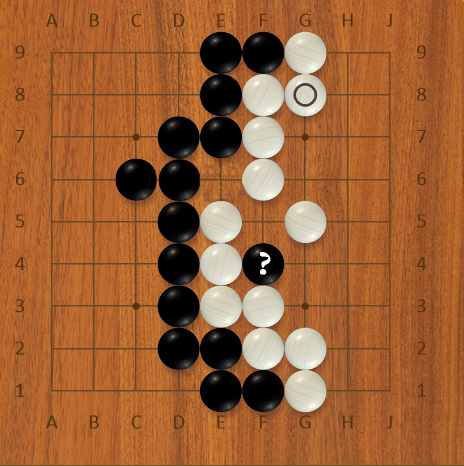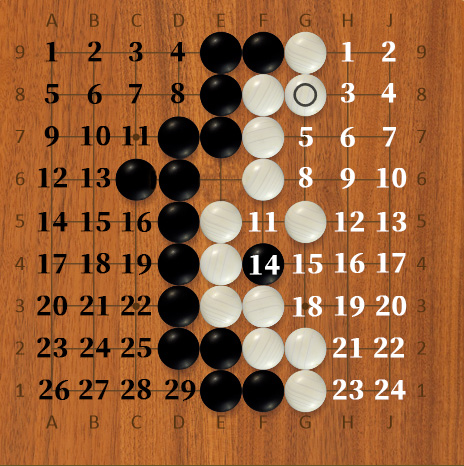| Passing & Counting
How to score a game
This is the last stop, the last thing preventing you from playing a complete game of Go. I am proud of you. It may seem insignificant but you are THIS close to learning possibly the most complex game the human race knows. You are not too good at playing it just yet, but at least you almost know the rules.
Ending a game of Go is not as straightforward as say, Chequers or Chess. The game ends when both players feel there is nothing more to gain. Then the player with more points (captures + surrounded territory + possibly komi) wins.

⬤ Captured stones and stones in your territory that cannot avoid capture are worth 1 point each.
Yes, you got it right. The game can only end when neither player wants to play further. This sounds easy but, it is also easy to screw up. So, before passing you should make sure that the game is actually over. This means there are no more moves that could give you more points. Let’s see an example of ending a game:
Black to play
After the game ends (two consecutive passes) we first remove all stones that have no way of preventing capture and add them as prisoners (just to save the time of playing out every needless move). This may sound confusing at first but it really isn’t that complicated. See the example below - let’s say both players passed in this position.

Any seasoned go player would know that the lone black stone in White’s territory has no chance of preventing capture. If you were not sure, you simply would not pass. It would make no sense to pass in this position if you thought that the black stone might survive because in such a case, the borders around each territory would not yet be complete.
We only count the empty spaces that are fully surrounded by stones of one color. Then add the prisoners, add komi (usually 6,5 points on the 19x19 board), and that’s it. Luckily for those who play online, the computer tallies the score for us. :) If you want to find out where you can now play online, check here.
Let me get back to this one later
what's next?
